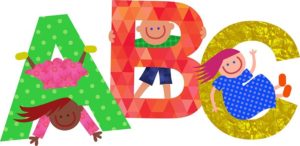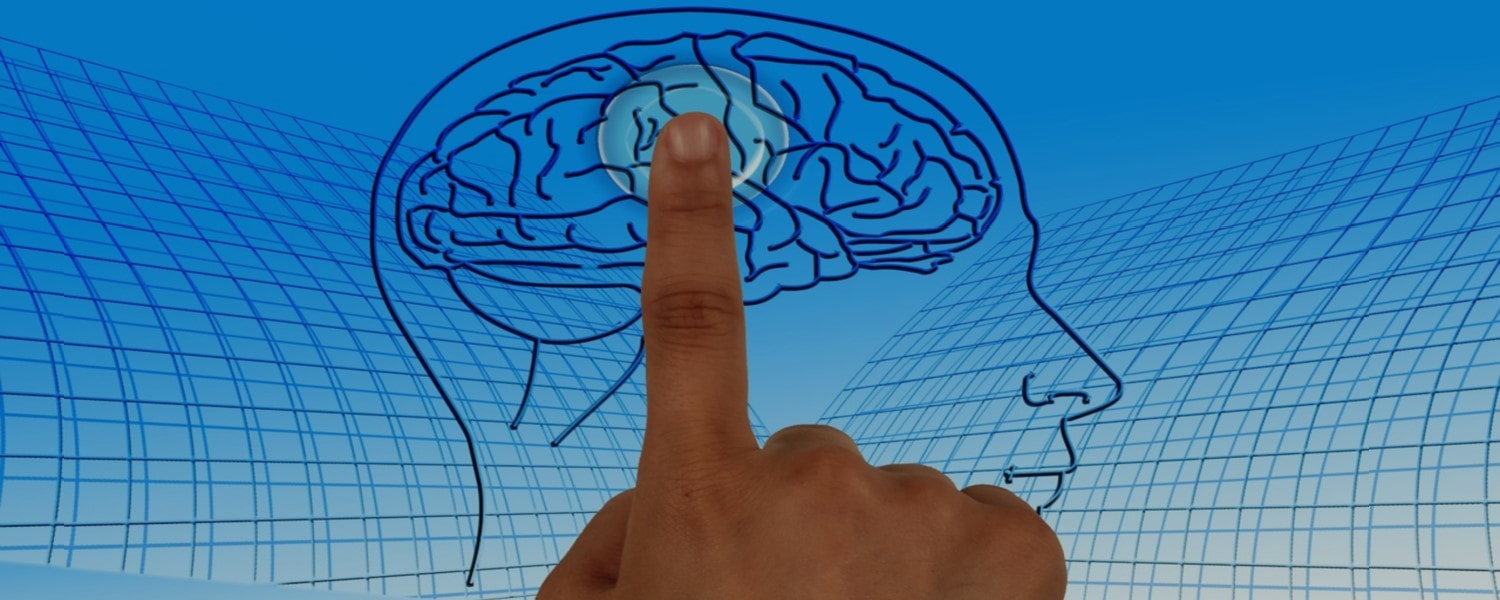8 Amazing Memory Techniques You Won’t Soon Forget!
A couple of years ago, I met this girl and there seemed to be mutual attraction, so I asked for her number. The problem was that I didn’t have my phone on me. No worries, I have a great memory – or so I thought. Seeing I didn’t have my phone she quickly said, ‘you don’t have your phone?’. ‘No problem, I confidently retorted, I have a good memory’. More on how the story ended a bit later…
Which brings us to the subject of today’s blog post – memory techniques
Have you ever been embarrassed because you have forgotten someone’s name? Or, how about going to the grocery store to pick up 4 things and not being able to remember what the 4th thing was?
If only you could have leveraged some memory techniques, neither would have happened!
This post was inspired by a recent podcast I listened to where memory expert Jim Kwik discussed how to remember people’s names, he introduced a concept called MOM – motivation, observation, and mechanics. However, in the podcast, he focused primarily on the motivation (which is your why for remembering) and on the observation (which is simply paying attention) aspects of MOM.
He didn’t get too deep into the mechanics part (which are techniques or strategies you can use to remember things), which made me curious to learn more about them. I also wanted to understand better how memory works and what we can do to boost our memories.
There are many proven memory techniques that we can use to remember things, and today I will cover a few that you can immediately put to use in your life.
But before we get to the memory techniques, it’s probably a good idea to have a general understanding regarding:
How Memory Works
Memory is simply the process of storing and remembering information over time.
Without getting too deep into the neuroscience of it, memory is a complex process that consists of 3 steps: encoding, storage, and recall:
Encoding – Is when your brain takes what you are trying to remember and then gives meaning to it, as we remember things better if they mean something to us. The 4 ways we encode information are audio (what it sounds like), visual (what it looks like), tactile (what is feels like) and semantic (what it means).
Storage – Next, we take that and store little parts of it scattered throughout different parts of our brain. First, it is stored in short-term memory and then it may move to long-term memory, if necessary.
Recall – Finally when we try to remember something our brain tries to retrieve it, reassembling it from the smaller stored pieces.
Now that we have a basic idea of how memory works, let’s quickly cover some…
Ways We Can Boost Memory
That way we will put ourselves in the best position possible to use the techniques below.
Some ways we can boost memory include:
Sleep

The importance of having energy and not being fatigued is crucial to learning and remembering things. Sleep expert Dr. Michael Breus recommends these steps for getting a better sleep and it’s all about consistency:
 Have a consistent sleep schedule – wake up at the same time every day, even on weekends.
Have a consistent sleep schedule – wake up at the same time every day, even on weekends.
 No caffeine after 2 pm or you will have a hard time falling asleep.
No caffeine after 2 pm or you will have a hard time falling asleep.
 No alcohol 3 hours before bed.
No alcohol 3 hours before bed.
 Exercise is the most important thing for sleep.
Exercise is the most important thing for sleep.
 Get 15 minutes of sun when you wake up, it helps to reset your clock.
Get 15 minutes of sun when you wake up, it helps to reset your clock.
Sleep also helps get rid of toxins that have built up throughout the day, this includes certain plaques that are thought to be responsible for Alzheimer’s. Your brain is too busy during the day doing brain stuff that it doesn’t have time to do this.
Exercise

Besides helping you sleep better, look good and feel better, exercise is great for your brain too! According to a study done at the University of British Columbia, aerobic exercise that gets your heart pumping also has been seen to increase the size of your hippocampus, which is the part of your brain that is associated with memory and learning.
Nutrition

There are certain foods that have been shown to boost your brain and memory including fish that are high in Omega-3-fatty acids, coffee, blueberries, turmeric, broccoli, dark chocolate, pumpkin seeds, nuts (particularly walnuts), oranges, eggs, and green tea.
Now that we have a basic understanding of how memory works and have learned a few ways we can boost it, let’s discuss some memory techniques.
If you read my recent post on 3 of my favorite podcast episodes, the next section will be a bit repetitive. But it is important as it will set the stage for the memory techniques to come. In it, Jim Kwik discusses how you can remember people’s names better:
Hi MOM!
As we all know, forgetting someone’s name can be the cause of much embarrassment and pain, while remembering names can be a source of victory.
As I said earlier, to remember names, Kwik teaches a method using the acronym ‘MOM’. The M stands for motivation, the O stands for observation, and the M stands for mechanics. Let’s take a quick look at each:
Motivation
Starting with motivation, Kwik suggests that even if you have a hard time remembering names, you would be able to remember the name of the next stranger you meet if he offered you a suitcase with a million dollars in it!
It’s true, right? And think about it – there was no special technique used, you were just motivated and had a reason to remember it.
That’s the key according to Kwik – you need to ask yourself ‘why’ you want to remember the name.
Is it to show them respect?
To make a new friend?
To get a new client?
So, come up with a reason to remember a person’s name when you meet them, and you will remember it. You may also want to reverse engineer it by thinking back to names you have remembered in the past to see ‘why’ you remembered them.
Observation
The second part of MOM is observation.
Kwik summarizes it by saying ‘it’s not your retention, it’s your attention’. The art of memory is the art of attention.
He tells a story about having dinner with former President Clinton and a bunch of other celebrities. Amazingly, Clinton remembered his name and recalled a previous conversation they had.
Clinton then told Kwik a story about how his grandfather would tell stories to him and the other grandkids when they were children. Then, when he was finished he would quiz the grandkids to see if they were paying attention – that’s where he thinks his ability to be present originated.
According to Kwik, when Clinton was telling Jim the story, he was focused completely on him, which he found amazing. It is well documented that this is the essence of Clinton – he has a powerful presence with people. That is also the secret to his incredible memory, his incredible memory and his powerful presence with people comes from being powerfully present with people.
Kwik concludes the segment on observation by asking a question: ‘who else could do what Clinton does?’
The answer is…all of us – all we need to do is be present and just listen, there are no special skills involved!
Mechanics
The last part of MOM is mechanics or memory techniques.
Mechanics are simply the strategies or skills that you can use to learn another language, memorize a speech or a phone number.
This is what we did not cover in the previous post and what we will cover in more detail in the next section.
Memory Techniques (Mechanics)
Now for the part that you have all been waiting for, 8 memory techniques we can use to better remember things.
We will start with one of the mechanics that Kwik teaches to help recall names and it is called:
(1) BE SUAVE
Which is an acronym whose letters stand for:
B – Believe: you can do it by eliminating all the negative self-talk. You need to stop saying you suck with names because eventually, it becomes a self-fulfilling prophecy.
E – Exercise: This refers both to physical exercise which we discussed above as well as practicing remembering names. For example, if you go into a store try to remember employee’s names and then test yourself as you leave.
S – Say it: Say the name out loud, “It’s nice to meet you, Charlie.”
U – Use it: In the conversation, just not too much or you will sound like a weirdo.
A – Ask: About the name, especially if you haven’t heard it before, how is it spelled, how is it pronounced – it will help you remember it and they will like that you asked about it.
V – Visualize: The name, we remember stuff more that we see than we hear such as the face instead of the name. So, visualize the name. For example, if you meet a guy named Bob, visualize him bobbing for apples. FDR would visualize the names of people he had just met on their foreheads in color.
E – End: If you are in a room and have met a bunch of people and say bye to each by name, they are going to remember you too!
The next set of techniques we will cover are ones that you may be familiar with and they are called ‘mnemonics’. Mnemonics are structures that make it easier for you to retrieve what you have learned. A few of the most common mnemonics are:
(2) Rhyme mnemonics
Many of us learned how many days are in a month using this one:
Thirty days hath September,
April, November, and June;
All the rest have thirty-one,
Excepting February alone,
And that has twenty-eight days clear
And twenty-nine in each leap year
How about predicting the weather?
Red sky at night,
Sailors delight,
Red sky in morning,
Sailors take warning
Or this one that I sometimes use myself,
Beer before liquor, never been sicker.
Liquor before beer, you’re in the clear.
(3) Acronym or name mnemonics
Here you use each letter of a word to represent something you want to remember.
For example, BE SUAVE above.
Or let’s say you need to remember how to treat a sprain?
Use RICE:
Rest
Ice
Compression
Elevation
(4) Sentence mnemonics
Use the first letter of each word to create a sentence that will help you remember something.
For example, to remember the order of operations in math use:
‘Please Excuse My Dear Aunt Sally’ which stands for:
parentheses, exponents, multiplication, division, addition, subtraction
(5) Songs and jingle mnemonics
Sometimes creating a song or jingle helps us remember stuff.
One that we all know is the jingle to remember our ABCs.

A few couple more techniques before we go…the first being what is called…
(6) Memory Palace or Method of Loci
The last mnemonic technique we will cover is an amazing one and one that I use personally.
It is called the Memory Palace or the Method of Loci which is a mnemonic device that goes back to Ancient Greece and is one of the oldest memory techniques there is.
What you do is imagine a physical place for which you are familiar – let’s use your house as an example. Then pick 10 places or objects in your house and memorize them in order.
For example:
(1) Driveway
(2) Sidewalk
(3) Welcome mat
(4) Front door
(5) Foyer
(6) Hallway
(7) Kitchen
(8) Counter
(9) Stove
(10) Fridge
Next, you take whatever it is that you want to remember and associate each word with one of your objects or locations.
The idea is that our spatial memories are stronger than are our memories for objects or words.
For example, let’s say there are 10 things you need to remember to get at the grocery store (yes, you could write them down, but humor me here).
The items are milk, paper towels, tomatoes, garlic, bananas, dog food, honey, bread, sweet potatoes, and ice cream.
Start by memorizing the objects or locations above and then as you mentally walk from your driveway to the fridge, you simply create a scene involving each thing you want to remember, for example:
(1) Driveway – imagine some spilled milk on the driveway.
(2) Sidewalk – visualize a roll of paper towels rolling towards you.
(3) Welcome mat – picture some tomatoes on your welcome mat.
(4) Front door – see garlic hanging from the door handle.
(5) Foyer – imagine seeing a monkey eating a banana.
(6) Hallway – your hungry dog waiting to be fed his dog food.
(7) Closet – visualize your honey in the closet eating honey.
(8) Kitchen counter – imagine a gingerbread house made of bread.
(9) Stove – there are a dozen sweet potatoes dancing on the stove.
(10) Fridge – you open up the fridge and a carton of ice cream starts screaming at you!
I know the examples I used are a little crazy…
But that’s the point! The crazier they are, the more memorable and easier they will be to remember. You can use objects or locations in your house, on your way to school or work – whatever it takes.
To summarize:
(1) Pick 10 (or however many things you want to remember) objects or locations (loci).
(2) Walk your way through them mentally (visualize) until you remember them.
(3) Then, take the words you want to remember and assign a visual image of each to a location one at a time.
(4) Keep adding items, say them out loud, visualize them.
Actually, if you have 30 minutes, I highly recommend watching this video where Kwik walks you through how to do the Memory Palace/Method of Loci, it is insane and will freak you out!
Another of my favorite memory techniques is…
(7) Chunking
Which is simply taking something big and breaking it down into smaller pieces to make it easier to remember. A great example is telephone numbers in the U.S. where 10 numbers are chunked into 3 sections to make them easier to remember. Not that we have to remember phone numbers these days with everyone storing them directly into cell phones.
One trick I use is to take a 6-digit number, break up into 3 two digits numbers and associate it will 3 of my favorite football players. For example, 523216 becomes Ray Lewis, Jim Brown, Joe Montana – then I just remember them.
Lastly…
(8) Reflection on Things You Have Read
The last technique helps to better remember stuff you have read. The idea is to reflect on what you have read and think about it, it’s implication and ramifications as well as the context to what you already know about it. This helps to strengthen the connection to what you already know about the subject.
Back to My Story…
Unfortunately, my memory wasn’t as good as I thought it was. Actually, it is probably more like I wasn’t paying attention as I was lost in her eyes because they were so pretty. Anyhoo, I forgot her number. Fast forward to a week later and I ran into her again and I had to come clean and tell her I forgot…
If only I had known MOM and had thought about my motivation for remembering her number (figure it out yourself), observed (paid attention) better, and used a mechanic or memory technique (like chunking) to remember it, I wouldn’t have found myself in such an embarrassing situation.
Luckily, she forgave me and luckily, I had my phone this time! So, I got her digits and…
If you are wondering what happened after that – my MOM told me to never kiss and tell!
I don’t need any memory techniques to remember that!
Until next time, use MOM to remember stuff, always listen to your MOM, and as always…PYMFP!
–Rick

Use It or Lose It:
Some of the memory techniques we covered were:
 Using MOM: Motivation, Observation, Mechanics
Using MOM: Motivation, Observation, Mechanics
 BE SUAVE to remember names
BE SUAVE to remember names
 Using Mnemonics:
Using Mnemonics:
 Rhyme
Rhyme
 Acronym/names
Acronym/names
 Sentence
Sentence
 Song/jingle
Song/jingle
 Method of Loci/Memory Palace
Method of Loci/Memory Palace
 Chunking
Chunking
 Reflecting
Reflecting
When to Use It:
 When you need to remember a name, a place, numbers – whatever.
When you need to remember a name, a place, numbers – whatever.
What Do You Think?
 Do you use memory techniques to remember things? Are there any others that I didn’t cover that you use? Please share in the comments below!
Do you use memory techniques to remember things? Are there any others that I didn’t cover that you use? Please share in the comments below!
If you enjoyed this post, it would mean the world to us if you shared it with people you care about via any of the social media platforms below!
Popular Previous Posts:
This is Why Teaching to Learn is the Best Way to Learn!
Socratic Questioning – This is How to Learn Like Socrates
Hocus Pocus: This is How to Stay Focused!
This is How to Get the Upper Hand on Hand Gestures
You’re Fired! 10 Things This Mofo Learned By Getting Fired
References
http://fatburningman.com/jim-kwik-10-simple-tricks-to-boost-brain-power-upgrade-your-memory/
https://zapier.com/blog/better-memory/
https://www.verywellmind.com/what-is-memory-2795006
https://www.huffingtonpost.com/entry/how-memory-works_us_5886edb2e4b08f5134b62443
https://psychcentral.com/lib/memory-and-mnemonic-devices/
Kwik Brain with Jim Kwik podcast, Episode #61: Overcoming Reading Fatigue with Dr. Michael Breus
Cal Fussman’s Big Questions podcast: Episode #20: Guest – Jim Kwik

I used mnemonic devices and chunking when studying for exams. It was a great method to help organize ideas and retrieve them when needed. I recently met a lady who introduced herself as Sandy and she added like a sandy beach. I then told her my name was Eileen like I lean over. I have not forgotten her name nor her mine. Eileen
Everyone has trouble remembering things. I have three general techniques: Write it, Repeat it, List it.
In a previous post you have discussed how to remember names, and I gave you my methods. The only numbers I remember are my house number and Pi (3.14159265). I’ve owned my truck 23 years and cannot tell you the license plate number. Phone numbers – no way, no need to. My suggestion – write things down, on your hand if necessary, then transfer when you return home. Of course, this assumes you remembered to take a pen with you. Someone gives you a phone number or address – write it down. A friend gives you directions to his/her place – write it down. Don’t want to mess up your hand with ink? Then use the back of a dollar bill.
Repetition over and over again has served me well. Way back when in high school, this idiot of an English teacher made the class memorize a passage from Hamlet, and said we would be tested on it. So I used the repetition mode – memorize one line, repeat it several times, add a second line, repeat both several times, add a third line, repeat all three……and so on until done. When finished, write down all the lines and compare with the printed text. On test day I regurgitated the passage onto paper one line at a time, then pressed the “Mental Flush” lever and dumped the whole thing out of my mind.
Lists are probably the best way to remember anything. We are going on a three day fun trip, we make a list of what needs to be packed. My wife’s figuring out dinner for the next couple of days, she lists what supplies from the grocery store. Got errands to run? Make a list. My rule is simple – 3 or more of anything requires a list. With a list, you do not have to remember anything except to take the list with you. That’s why it’s taped to the door.
“I often let my mind wander. Sometimes it does not come back”.
Hi Dave, Writing, repeating, and listing are 3 good strategies, repetition is also key! Thanks as always, Rick